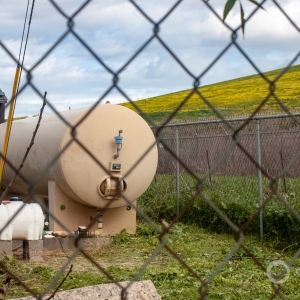Federal Water Tap, April 15: Trump Energy Order Targets State Water Permitting Authority
The Rundown
President Trump hopes to boost construction of energy infrastructure projects. The Senate confirms David Bernhardt to lead the Interior Department. Congress approves a Colorado River basin conservation plan. The Army Corps’ management of Missouri River reservoirs comes under the microscope. The USDA releases its census of farm data. Federal officials prepare a trade mission to Angola and South Africa to promote U.S. water technology companies. And lastly, an EPA advisory group will meet this week to discuss water project financing.
“And finally, it will stop state-level abuse of water quality certifications — they abuse you; when you’re nowhere near water, they abuse you — from blocking the construction of vital pipeline projects as we rebuild our energy infrastructure.” — President Trump, in remarks on April 10 before signing a pair of executive orders that favor construction of energy projects. (The “you” was the president’s audience, members of the International Union of Operating Engineers, which represents workers that operate heavy construction machinery.) Trump called out New York for blocking the Constitution natural gas pipeline, a move state officials made in 2016 because of concerns about some 250 stream crossings.
By the Numbers
56 to 41: Vote to confirm David Bernhardt as the Interior Department secretary, despite green groups and Democratic senators raising concerns about ethics violations and conflicts of interest. (Senate)
17 percent: Increase in U.S. oil output in 2018, reaching a record monthly high in December of nearly 12 million barrels a day. Production is forecasted to grow in the next two years as well. (Energy Information Administration)
News Briefs
Energy Permitting Executive Orders
President Trump signed yet another executive order to ease the building of infrastructure to support fossil fuel development.
The main target of the order is Section 401 of the Clean Water Act, which grants states the power to certify that construction projects will not harm water quality. States have used their Clean Water Act authority in recent year to block pipeline proposals — New York state did so in 2016 over the Constitution natural gas pipeline.
The order directs the U.S. Environmental Protection Agency to consult with states and tribes about whether Section 401 guidance should be modified.
Some state organizations have expressed firm opposition to the administration’s attempt to supersede state permitting authority.
The Western Governors’ Association, for example, asked Andrew Wheeler, the EPA administrator, in a March 25 letter, that any changes to the Section 401 program not “curtail, diminish or otherwise negatively affect states’ well-established legal authorities over water resources.”
The order mentions transmission once and coal, gas, and oil projects frequently, but never solar, wind, or renewable energy.
A second order signed by the president changes the permitting process for infrastructure that crosses an international border. A previous executive order had vested power for these determinations with the secretary of state. Now it will be the president that signs off on cross-border projects like pipelines, transmission lines, and sewer lines.
Section 401 Bills
Republicans from fossil-fuel producing states introduced bills in the House and Senate that would narrow state use of Section 401 of the Clean Water Act.
Rep. David McKinley (R-WV) and Sen. John Barrasso (R-WY) are the lead sponsors.
Colorado River Plan Passes Congress
The House and Senate moved quickly to approve a state-led conservation plan that will keep more water in the big reservoirs of the Colorado River basin.
“It is rare for Congress, but in this case, we respected what the states have done, and we are moving quickly to try and get this into law,” said Rep. Rob Bishop (R-UT) in remarks on the House floor.
Missouri River Floods Aftermath
While communities in the Midwest are still reeling from record-high water levels last month, Congress and federal agencies are sorting out their own responses.
One is to change how the basin’s reservoirs are managed. Rep. Sam Graves (R-MO) filed a bill that would remove fish and wildlife as management priorities for the Army Corps of Engineers, which operates the basin’s mainstem reservoirs. Flood prevention would become the top priority.
Army Corps officials say they are assessing damaged levees to prioritize them for repairs. Some 280 miles of levees were scoured and eroded, Col. John Hudson, commander of the Omaha District, said at a public meeting in Nebraska, the Progressive Farmer reports.
Top of the repair list is a levee near Percival, Iowa.
The Senate Environment and Public Works Committee, meanwhile, will hold a field hearing on April 17 to discuss the Army Corps’ management of the basin’s reservoirs during the March floods. The hearing will be in Glenwood, Iowa.
That’s not the beginning of the high-level visitors. Vice President Mike Pence toured flooded parts of Iowa last week and told residents that federal aid would be arriving.
“I want to make you a promise that, on behalf of the president of the United States, your governor, your two senators, we’re going to get the support that Iowa needs, and we are going to rebuild all these communities and families and homes and farms bigger and better than ever before,” Pence said while in the town of Pacific Junction.
Studies and Reports
Inaccurate Toxics Data
The EPA Office of the Inspector General notified the agency that data on toxic substances released to air, land, and water by wastewater treatment facilities is incorrect.
Data in the Toxics Release Inventory is self-reported, and some 650 chemicals are tracked. The inspector general is auditing facilities that were late in reporting data.
Census of Agriculture
Data released by the U.S. Department of Agriculture shows that irrigation continues to spread in the Midwest and South.
Irrigated farmland climbed to 58 million acres, a new record. Irrigated acres increased in Georgia, Illinois, Indiana, Iowa, Missouri, and South Carolina, while they decreased in some of the traditional powerhouses of irrigation: California, Kansas, and Texas.
The USDA also announced that it will conduct a survey next year on the number of organizations that supply irrigation water to farmers. The survey will also ask about conservation policies. The last time the department gathered this information was in 1978.
On the Radar
Environmental Finance Meeting
The EPA’s Environmental Financial Advisory Board meets in Washington, D.C. on April 17 and 18.
The agenda shows discussions about evaluating Chesapeake Bay projects, stormwater financing, water system regionalization, and an update on America’s Water Infrastructure Act, which the president signed last October.
In context: In Bid for Cleaner Water, California Seeks Arranged Utility Marriages
Water Trade Mission
The federal government is organizing a trade trip to Angola and South Africa that will promote U.S. water businesses.
The trip will take place July 6 to 16 and focus on water and wastewater technology companies.
Federal Water Tap is a weekly digest spotting trends in U.S. government water policy. To get more water news, follow Circle of Blue on Twitter and sign up for our newsletter.
Brett writes about agriculture, energy, infrastructure, and the politics and economics of water in the United States. He also writes the Federal Water Tap, Circle of Blue’s weekly digest of U.S. government water news. He is the winner of two Society of Environmental Journalists reporting awards, one of the top honors in American environmental journalism: first place for explanatory reporting for a series on septic system pollution in the United States(2016) and third place for beat reporting in a small market (2014). He received the Sierra Club’s Distinguished Service Award in 2018. Brett lives in Seattle, where he hikes the mountains and bakes pies. Contact Brett Walton





Leave a Reply
Want to join the discussion?Feel free to contribute!